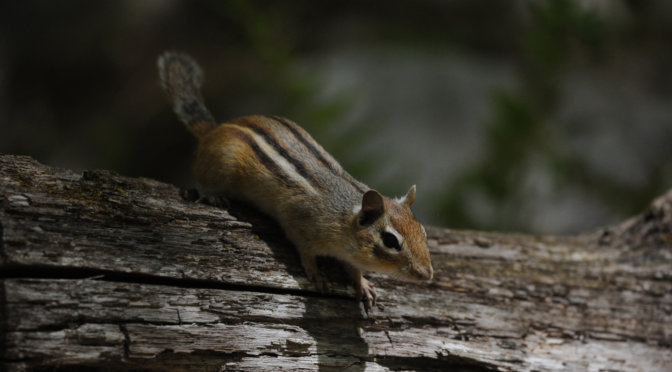Tom Estill’s excellent report of fall happenings in the park. Have fun reading!
Wild Times at Pine Hill Park Fall, 2020 Summary
The first day of fall found a very quiet forest, with most migrating birds gone but butterflies, such as the Red Admiral, still flying about and Rocky and Muddy Ponds seeing a buildup in numbers of migrating Canada geese. Great blue herons could still be found at both lakes, and the only other birds I saw this day were black-capped chickadees, blue jays and an ovenbird.
Gray squirrels and Eastern chipmunks continued to be busy collecting acorns for the long winter ahead.
The last week of Sept. found the forest very dry due to lack of rain. Fall foliage season was in its early start, and the number of Canada geese was increasing at Muddy Pond. Along with Canada geese, you could also find double crested cormorants and wood ducks at Muddy Pond. Hermit thrush and many migrating passerines could be seen flying through the forest. Mourning dove, blue jays, black-capped chickadees, downy and hairy woodpeckers were seen. Two young deer were seen near Trail Marker 16, a common sight in this area a good part of summer. The Pearl Crescent and Clouded Sulfur butterflies were also seen. Acorns dropping in large numbers.
On Oct. 4th, I was greatly disappointed to discover that one of the American Chestnut trees showed signs of being infected with the chestnut blight. But I wasn’t too surprised. American chestnut seedlings grow for about 5 years, then infection sets in. The trees were planted in 2015, so it was time, I guess. I was hoping this one particular tree would do better because it is the only American/Chinese hybrid chestnut tree in the forest. Chinese chestnut trees are immune to the blight and I was hoping some of that immunity would have protected the tree better.
The first week of October found a forest covered in leaves and acorns falling in great numbers. Resident and migrating birds seen included sharp-shinned and broad-winged hawks,
yellow-bellied sapsuckers sucking sap from holes they made in birch trees, least flycatcher, yellow-bellied flycatcher, crow, blue jays, black-capped chickadees, tufted titmouse,
white-breasted nuthatch, winter wren, red-eyed vireo, solitary vireo, black-throated blue warbler, myrtle warbler, blackburnian warbler and white-throated sparrow. About 50 geese were seen at Rocky Pond, and near 200 seen at Muddy Pond.
On Oct. 11th, Canada geese were still numerous at both ponds, leaves were still falling, the ground was covered with acorns, and a myrtle warbler and yellow-throated vireo were seen flying about.
Oct. 17th was a glorious fall day. Leaves were still falling, with most leaves gone from their limbs. Robins were migrating through the forest in large numbers, and others migrants including, solitary vireo, northern flicker, white-throated sparrow and hermit thrush could also be seen. Squirrels and chipmunks were out in large numbers collecting acorns, and Muddy Pond now had hundreds of migrating Canada geese resting there.
By the last week of October, most of the leaves were off the trees at this point, with the exception of beech and oaks. Flocks of robins were still migrating through the forest, and just a few other migrants were seen including, solitary vireo, yellow-throated vireo and yellow-bellied sapsucker. Hundreds of geese still resting at Muddy Pond.
On the last day of October, I saw only a few blue jays and winter wrens, but hundreds of geese still at Muddy Pond. I did come upon a pair of ruffed grouse, and using my bird call AP was able to call them close to my location until a dog, off its leash, came running up to me, scaring off the birds. LEASH YOUR DOGS!!!!!!!
November 8th found a daytime temperature of near 70 degrees F. Most leaves were gone from oak trees, and the forest seemed so barren. Hundreds of geese still seen at Muddy Pond, and only year-round resident birds including, blue jay, tufted titmouse, black-capped chickadee, white-breasted nuthatch, hairy woodpecker, pileated woodpecker, were seen. Chipmunks and gray squirrels seen in large numbers.
By mid-November, the forest had become very quiet. On Nov. 15th, I saw only white-breasted nuthatch, black-capped chickadees, and crows flying overhead. The geese at Muddy and Rocky Ponds were all gone.
On Nov. 11th, ice was starting to appear around the perimeter of Muddy Pond, while Rocky Pond was free of ice. It wasn’t until Nov. 22 that a thin sheet of ice was starting to cover parts of Rocky Pond. Squirrels and Gray Squirrels were still out and about. Loose associations of winter birds were starting to appear. One such association included hairy and downy woodpeckers, black-capped chickadees, white-breasted nuthatches and tufted titmouse.
Dec. 5th brought to the area its first Nor’easter of the season. Ice had disappeared from both ponds, no birds were seen on my walk that day, and there was a light rain.
Dec. 7th found both Rocky and Muddy Ponds completely frozen over.
That’s it for this issue. Please stay on the trails and enjoy the wildlife of Pine Hill Park.


thank you for the article